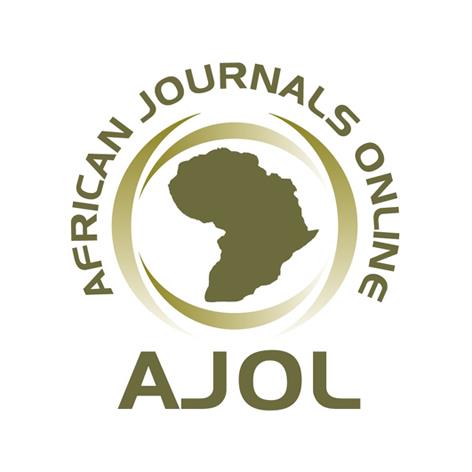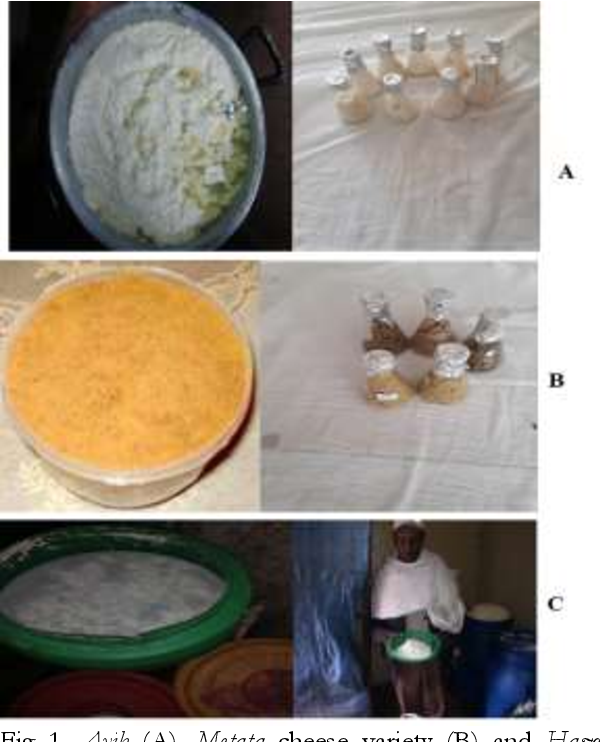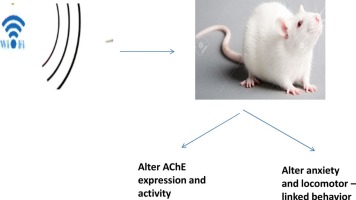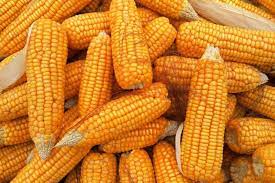Performance and Carcass Components of Broilers Fed on Different Proportions of Maize and Dry Roasted Barley
Downloads
Background: Barley grain contains more protein and ash than maize. However, it is inherently high in β-glucans which are poorly utilized by poultry. Dry roasting could be a relatively inexpensive method to reduce the associated negative effects of β-glucans on poultry performance.
Objective: This study was conducted to investigate the effect of dry roasting on proximate composition and β-glucan content of barley and evaluate growth performance, and carcass parameters in broiler chickens fed maize-based diets substituted with graded levels of barley.
Material and methods: The experiment was conducted on 168 unsexed day-old broiler chickens (Cobb 500) reared to 56 days of age. The chickens were randomly assigned to four dietary treatments (T1 - maize-based control diet, and experimental diets where maize was replaced with dry roasted barley at 33.3% - T2, 66.7% -T3 and 100% - T4). Feed intake was recorded daily for each pen and body weight changes were measured weekly. Four randomly selected broilers per pen were slaughtered and eviscerated to determine carcass parameters at the end of the experiment. Average daily gain (ADG), feed conversion ratio (FCR) and mortality were computed for each phase of feeding.
Results: The results of chemical analysis revealed that dry roasting reduced the β-glucan content in row barley (83.2 g kg_1) to 18.5 g kg_1. The daily feed intakes of broilers in T4 (100% roasted barley) was lower (P < 0.01) than those broilers fed T3, T2, and the control diet. The ADG of broilers on diet containing 100% roasted barley was significantly lower (P < 0.01) than the rest during the finisher phase. However, broilers in all treatments had similar ADG for the starter phase as well as the entire experimental period. The final body weights of broilers at day 56 were 2213.47 g (T1), 2200.77 g (T2), 2116.30 g (T3) and 2019.17 g (T4). Broilers in all treatments had similar (P > 0.01) FCR at all stages of this study. Neither ill health signs nor mortality occurred throughout the study period. The weight of primal carcass cuts and edible offals were unaffected (P > 0.01) by the treatment diets.
Conclusion: The application of dry roasting appeared to be simple and inexpensive processing technique in enhancing the growth efficiency and nutrient utilization of barley-based diets for enhanced productivity of chickens. The results imply that dry roasted barley can be included up to 330 and 435 g kg_1 in the starter and finisher broiler diets without affecting feed intake, growth performance, and carcass parameters.
Abd El-Khalek, E. and Janssens, J. 2010. Effect of extrusion processing on starch gelatinization and performance in poultry. World’s Poultry Science Journal, 66 (1): 53–64.
AOAC (Official Methods of Analysis). 2000., The Association of Official Analytical Chemists. 17th Edition. Gaithersburg, MD, USA. Methods 925.10, 65.17, 974.24, 992.16.
Bhuiyan, M., Islam, F., Cowieson, J. and Iji, A. 2012. Effect of source and processing on maize grain quality and nutritional value for broiler chickens. Heat treatment and physiochemical properties. Asian Journal of Poultry Science, 6 (4): 101–116.
Butt, S., Muhammad, N., Muhammad, K., Rabia, S. and Mehmood, B. 2008. Oat: Unique among the cereals. European Journal of Nutrition, 47: 68–79.
Cheru Tesfaye, Aberra Melesse and Aster Abebe. 2018. Response of broiler chickens to different levels of Moringa stenopetala leaf meal as a substitute for noug seed (Guizotia abyssinica) cake on growth performance and carcass components. International Journal of Research in Agriculture and Forestry, 5: 1–10.
Emiola, I.A. and Ologhobo, A.D. 2006. Nutritional assessment of raw and differently processed underutilized legumes seed in broiler diet. Journal of Animal and Veterinary Advances, 5(2): 96–101.
Gracia, M., Latorre, M., Garcia, M., Lazaro, R. and Mateos, G. 2003. Heat processing of barley and enzyme supplementation of diets for broilers. Poultry Science, 82(8): 1281–1291.
Gurbuz, Y. 2017. Heat applications in feed and food processing. International Journal of Advances in Science, Engineering and Technology, 5(3): 33–37.
Huang, R., Pan, X., Jingang, L., Zhong, W., Yan, F., Duan, F. and Jia, L. 2018. Effects of explosion puffing on the nutritional composition and digestibility of grains. International Journal of Food Properties, 21: 2193–2204.
Izydorczyk, M.S. and Dextor, J.E. 2008. Barley β-glucans and arabinoxylans: Molecular structure, physicochemical properties, and uses in food products – A review. Journal of Food Research International, 41: 850–868.
Jacob, J.P. and Pescatore, A.J. 2014. Barley β-glucan in poultry diets. Annals of Translational Medicine, 2: 20. Doi:10.3978/j.issn.2305-5839.2014.01.02.
Jacob, J.P. and Pescatore, A.J. 2012. Using barley in poultry diets – A review. Journal of Applied Poultry Research, 21(4): 915–940.
Leeson, S., Caston, L., Kiaei, M. and Jones, R. 2000. Commercial enzymes and their influence on broilers fed wheat or barley. Journal of Applied Poultry Research, 9: 242–251.
Mansoori, B., Modirsanei, M. and Nodeh, H. 2011. Alteration of D-xylose intestinal absorption in broilers with high dietary barley intake. International Journal of Veterinary Research, 5: 248–254.
Mathison, G.W. 1996. Effects of processing on the utilization of grain by cattle. Animal Feed Science and Technology, 58 (1–2): 113–125.
Melkamu Bezabih. 2013. Carcass characteristics of Rhode Island Red (RIR) grower chicks feed on different levels of dried tomato pomace (DTP). International Journal of Advanced Research, 1(2): 17–22.
Moharrery, A. 2006. Comparison of performance and digestibility characteristics of broilers fed diets containing treated hulled barley or hulless barley. Czech Journal of Animal Science, 51(3): 122–131.
Nahas, J. and Lefrancois, M. 2001. Effects of feeding locally grown whole barley with or without enzyme addition and whole wheat on broiler performance and carcass traits. Poultry Science, 80 (2): 195–202.
Nikkhah, A. 2012. Barley grain for ruminants: A global treasure or tragedy. Journal of Animal Science and Biotechnology, 3: 1–9.
Nikolova, N., Pavlovski, Z., Milošević, N. and Perić, L. 2007. The quantity of abdominal fat in broiler chicken of different genotypes from fifth to seventh week of age. Biotechnology in Animal Husbandry, 23 (5–6–2): 331–338.
NRC (National Research Council). 1994. Nutrient Requirements of Poultry: 9th revised edition. The National Academies Press, Washington, DC. Available at https://doi.org/10.17226/2114.
Onderci, M., Sahin, N., Cikim, G., Aydin, A., Ozercan, I., Ozkose, E., Ekinci, S., Hayirli, A. and Sahin, K. 2008. β-Glucanase-producing bacterial culture improves performance and nutrient utilization and alters gut morphology of broilers fed a barley-based diet. Animal Feed Science and Technology, 146(1): 87–97.
Ribeiro, T., Lordelo, M., Prates, J., Falcão, L., Freire, J., Ferreira, L. and Fontes, C. 2012. The thermostable β-1, 3-1, 4-glucanase from Clostridium thermocellum improves the nutritive value of highly viscous barley-based diets for broilers. British Poultry Science, 53: 224–234.
Sadeghi, G. and Habibian, M. 2016. Effects of enzyme supplementation on replacing corn with barley in diet of broiler chicks. Bioscience and Biotechnology, 5(2): 159–165.
Saki, A., Mirzayi, S., Ghazi, S, Moini, M., Harsini, N., Haghighat, M. and Mahdavi, R. 2010. Effect of various level of treated barley on small intestinal content viscosity, litter moisture, uric acid and broiler chicken performance. Journal of Animal Veterinary Advances, 9: 2627–2632.
SAS (Statistical Analysis System). 2012. Statistical Analysis System, User's Guide. Statistical. Version 9.1th ed. SAS. Inst. Inc., Cary, N.C., USA.
Seid Ali, Negassi Ameha and Mengistu Urge. 2020. Effect of replacing maize (Zea mays) with barley (Hordeum vulgare) on broilers performance and carcass characteristics. East African Journal of Sciences, 14(1): 83–94.
Shakouri, M., Iji, P., Mikkelson, L. and Cowieson, A. 2009. Intestinal function and gut microflora of broiler chickens as influenced by cereal grains and microbial enzyme supplementation. Animal Physiology and Animal Nutrition, 93: 647–658.
Sharma, P., Gujrala, S. and Rosell, M. 2011. Effects of roasting on barley β-glucan, thermal, textural and pasting properties. Journal of Cereal Science, 53(1): 25–30.
Shewry, P.R. 2009. Improving the protein content and quality of temperate cereals: Wheat, barley and rye. In: Cakmak E. and Welch, R.M. (eds.) Impacts of Agriculture on Human Health and Nutrition. Vol. II. Oxford EOLSS Publishers Co. Ltd., Oxford, UK.
Shirzadi, H., Moravej, H. and Shivazad, M. 2009. Comparison of the effects of different kinds of NSP enzymes on the performance, water intake, litter moisture, and jejunal digesta viscosity of broilers fed barley-based diet. Food, Agriculture and Environment, 7: 615–619.
Svihus, B., Edvarsen, D.H., Bedford, M.R. and Gullord, M. 2000. Effect of methods of analysis and heat treatment on viscosity of wheat, barley and oats. Animal Feed Science Technology, 88(1/2): 1–12.
Teguia, A. and Beynen, C. 2005. Alternative feedstuffs for broilers in Cameroon. Livestock Research for Rural Development, 17: 34. Available at http://www.lrrd.org/lrrd17/3/tegu17034.htm.
Varastegani, A. and Dahlan, I. 2014. Influence of dietary fiber levels on feed utilization and growth performance in poultry. Journal of Animal Production Advances, 4(6): 422–429.
Veldkamp, T., Kwakkel, R., Ferket, P. and Verstegen, M. 2005. Growth response to dietary energy and lysine at high and low ambient temperature in male Turkeys. Poultry Science, 84: 273–282.
Wiseman, J. 1987. Feeding of non-ruminant animals. Pp. 9–15. In: Meeting nutritional requirement from available resources. Butter worth and C. Ltd. Pp. 370.
Yibrehu Emshaw, Aberra Melesse and Getinet Assefa. 2012. The effect of dietary inclusion of mango fruit (Magnifera indica L.) waste on feed intake, growth and feed efficiency of Cobb 500 broiler chickens. Ethiopian Journal of Agricultural Sciences, 22(1): 73–83.
Copyright (c) 2023 Seid Ali, Negassi Ameha, Mengistu Urge

This work is licensed under a Creative Commons Attribution-NoDerivatives 4.0 International License.
- I am authorized by my co-authors to enter into these arrangements.
- I warrant, on behalf of myself and my co-authors, that:
- the article is original, has not been formally published in any other peer-reviewed journal, is not under consideration by any other journal and does not infringe any existing copyright or any other third party rights;
- I am/we are the sole author(s) of the article and have full authority to enter into this agreement and in granting rights to Springer are not in breach of any other obligation;
- the article contains nothing that is unlawful, libellous, or which would, if published, constitute a breach of contract or of confidence or of commitment given to secrecy;
- I/we have taken due care to ensure the integrity of the article. To my/our - and currently accepted scientific - knowledge all statements contained in it purporting to be facts are true and any formula or instruction contained in the article will not, if followed accurately, cause any injury, illness or damage to the user.
- I, and all co-authors, agree that the article, if editorially accepted for publication, shall be licensed under the Creative Commons Attribution License 4.0. If the law requires that the article be published in the public domain, I/we will notify Springer at the time of submission, and in such cases the article shall be released under the Creative Commons 1.0 Public Domain Dedication waiver. For the avoidance of doubt it is stated that sections 1 and 2 of this license agreement shall apply and prevail regardless of whether the article is published under Creative Commons Attribution License 4.0 or the Creative Commons 1.0 Public Domain Dedication waiver.
- I, and all co-authors, agree that, if the article is editorially accepted for publication in Haramaya Journals, data included in the article shall be made available under the Creative Commons 1.0 Public Domain Dedication waiver, unless otherwise stated. For the avoidance of doubt it is stated that sections 1, 2, and 3 of this license agreement shall apply and prevail.












